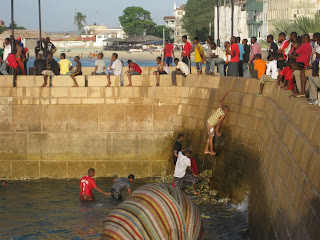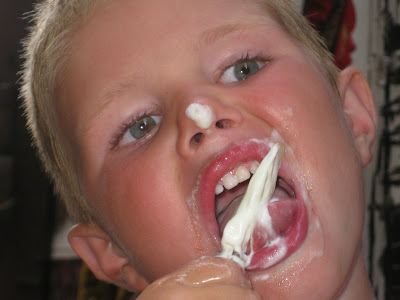
Each evening, we went down to the water to a park called Forodhani Gardens. Every night, vendors set up their tables and sell food to hundreds of people just like us.
You choose what you want to eat, and then they will cook it on a grill. Between all of us, we tried octopus, barracuda, baby shark, tuna, red snapper, shrimp, and beef. You can see below how crowded it gets every night.
Before we ate, we watched lines of young men diving off the walls of the island and then climb back up for more.
When that got old, Kylie decided she wanted her hand painted with henna,
And then Karis decided she wanted to do it, too.
After eating, the kids wanted to go to the playground – which we had to pay to play on.
They really stood out.
My kids haven’t seen television in a long time. We have a TV to watch movies on or play Wii, but you know what I mean.
Anyway, at the hotel where we stayed, they had cable, and my kids were drawn to it like a moth to flame.
They were watching a National Geographic special and Karis needed to go to the bathroom, so she said, “Pause it, please,” not even thinking that that was something strange to say.
Small things like that make me smile.
Extra pictures:
Goodbye Zanzibar –
Side note: I know I haven’t mentioned this before, but Obama is quite popular here, as you might have guessed. They sell Obama gum, Obama T-shirts, and restaurants and buildings are named after him. They even sell material with his likeness on it, so that you can make things out of it.
Here’s someone’s handiwork.
Another side note: For all you Queen fans, I learned the Freddy Mercury was born and raised in Zanzibar.
The End.






























































